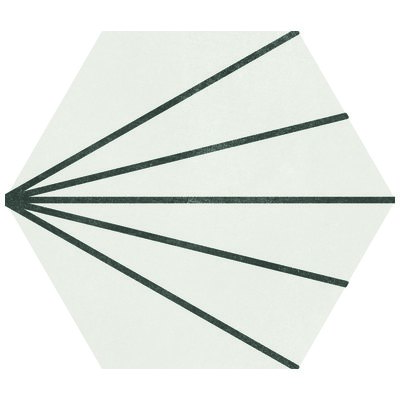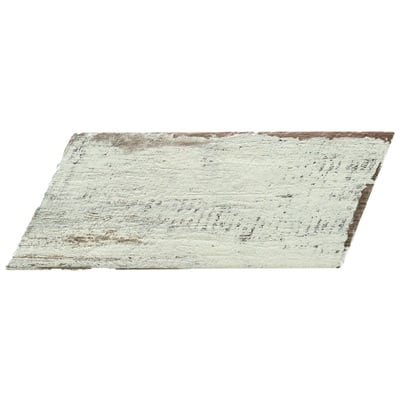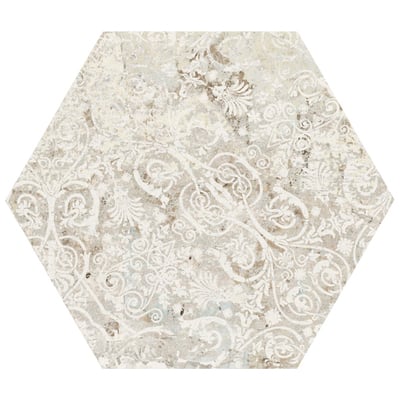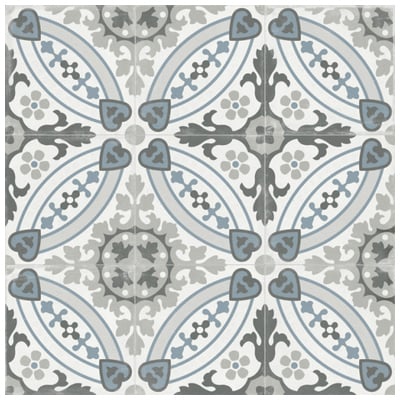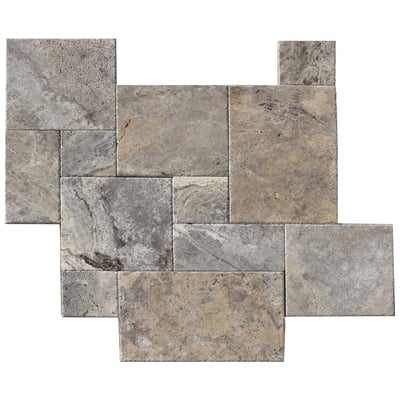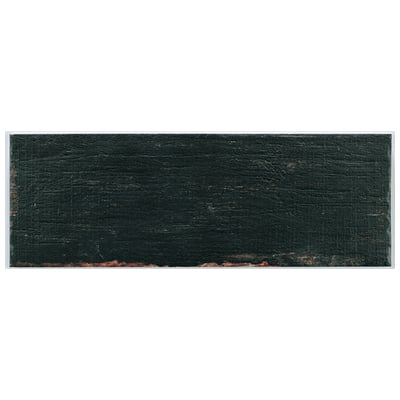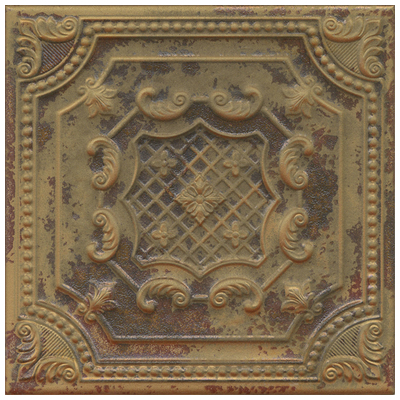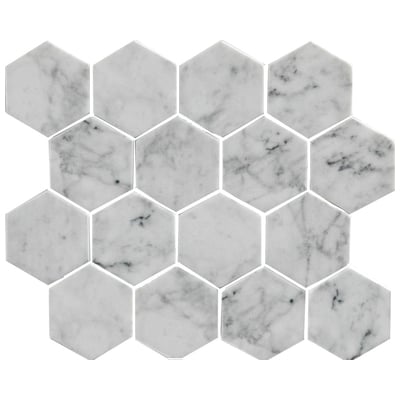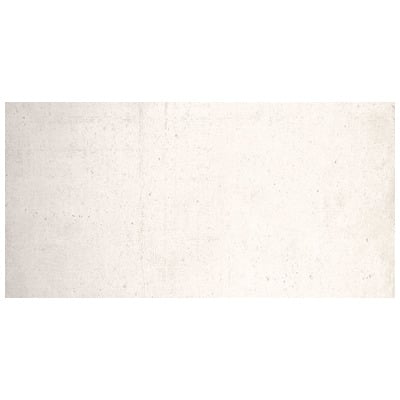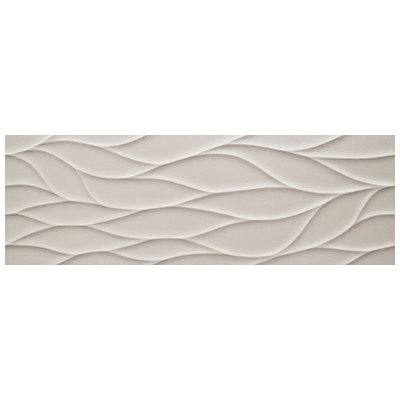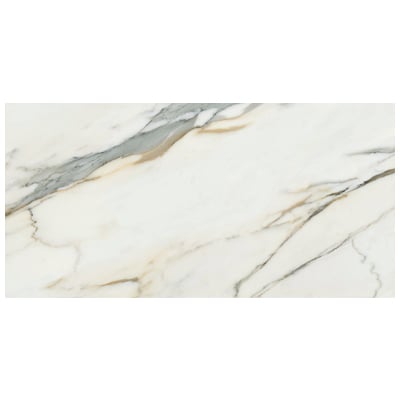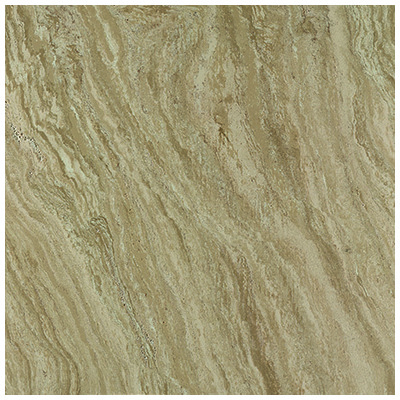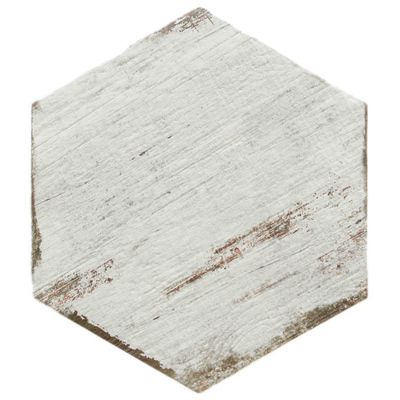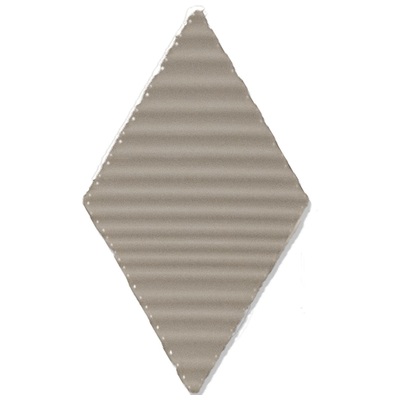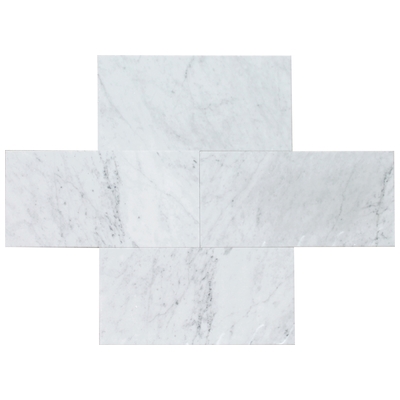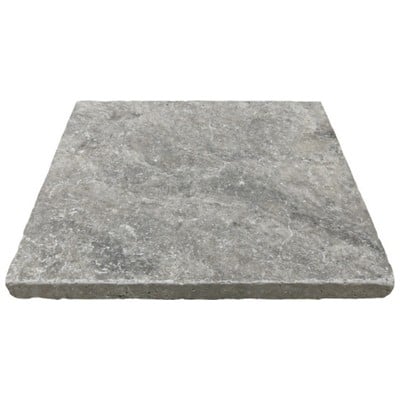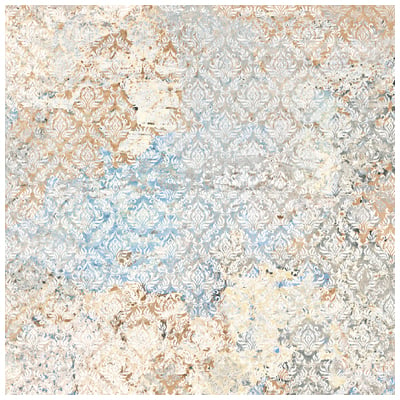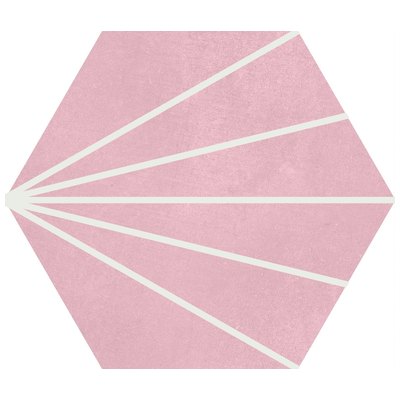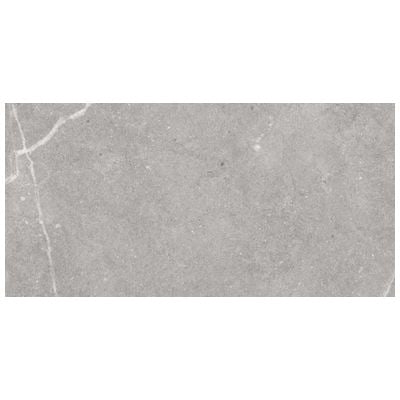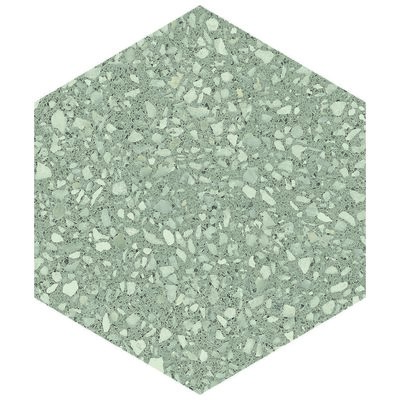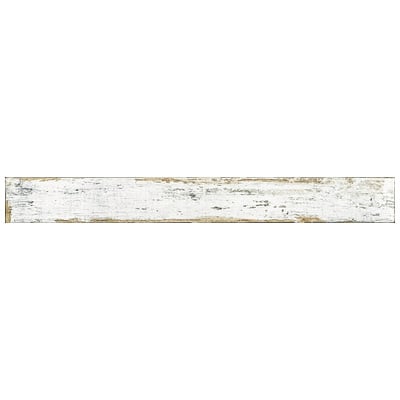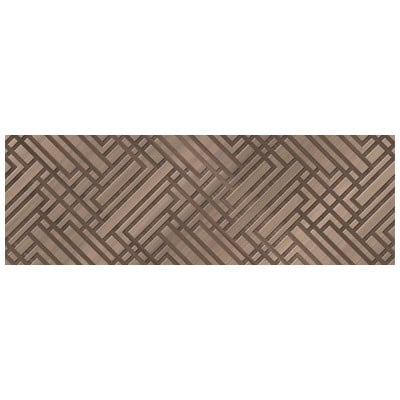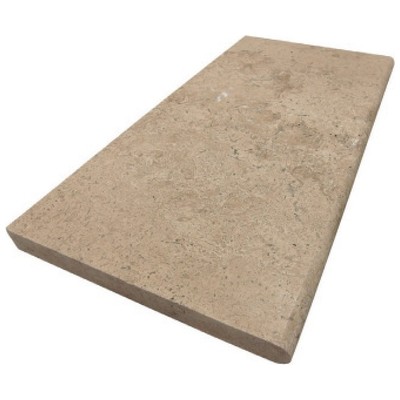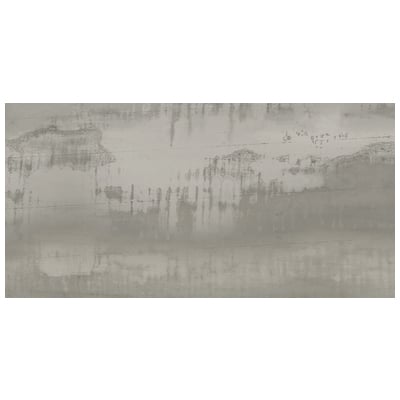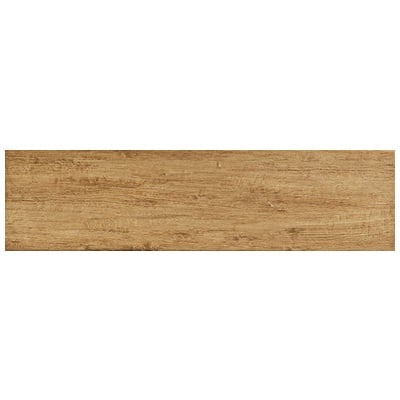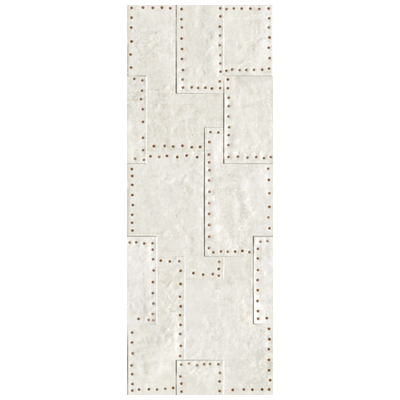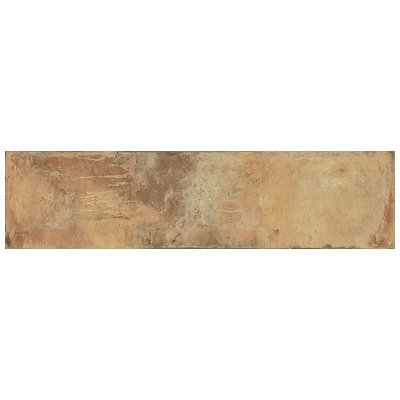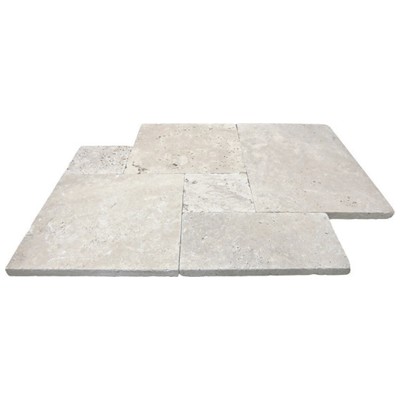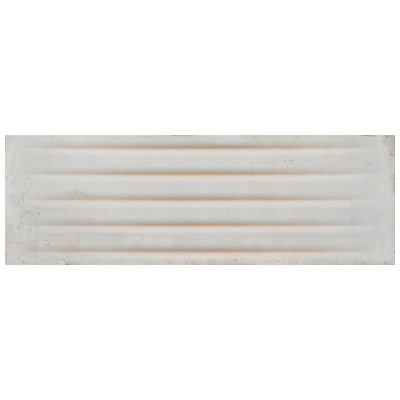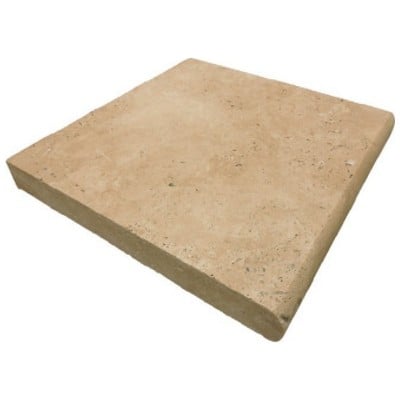When it comes to buying ceramic tile, there’s more than a little confusion of terms, particularly the distinction between ceramic and porcelain tile. Most of us are pretty sure there is a difference, and maybe have a vague notion that porcelain tile is better, but the actual distinctions between the two can be a bit fuzzy. There’s a reason for this: the word “porcelain” has been used to refer to many different types of tile throughout history and in different parts of the world, and manufacturers might be using any or none of those definitions for any given type of tile.
The Short Version

Shop Tesoro Tile:
The simplest answer is that there really isn’t any difference between ceramic and porcelain – except when there is. You see, “porcelain” isn’t a regulated term in the US, so any manufacturer can label any ceramic tile as porcelain. In some ways, this makes sense. After all, porcelain tile is just a type of ceramic tile that’s made using largely the same materials and methods. But the term can be quite misleading, not the least because it often accompanies a higher price tag without necessarily being any higher quality, so it’s important to look at the qualities and certifications of the tile to make sure the “porcelain” tile you’re getting is really what you want.
Color

Historically, the term porcelain has been used to describe very light or white tile that’s made from clay that has a very low iron content. Higher amounts of iron darken the color of the tile, from softy rosy pinks and peaches all the way to dark, distinctive terra cotta, and the lighter tile was prized for its relative “purity” (though the composition otherwise is very similar). But these days unless you’re buying unglazed ceramic tile, the color of the actual tile doesn’t really matter – it’s the color of the glaze that you’ll see. Dark clay tiles can be glazed white and vice versa, and once they’re installed, the actual material the tile is made of is completely hidden. If you’re considering unglazed tile, the color is more important, and often light colored tile will be called porcelain regardless of its other qualities. That said, the term “porcelain” may also be applied to unglazed tile that’s denser and the same color throughout, which minimizes the visibility of chips or other minor damage, but the term “through body” is a better guarantee that that’s what you’re getting.
Quality

Shop Mediterranea Tile:
More recently, the term porcelain has been used to refer to ceramic tile that is of a higher quality. This claim is also a bit dubious, as again there’s no legal definition, standards, or requirements for the term. That said, while ceramic and porcelain tile are made using the same process (the clay is shaped, dried, and fired), tile that’s fired longer and at a higher temperature is much more durable than tile that’s fired for a shorter amount of time at a lower temperature. Higher temperatures allow the tile to undergo a more thorough vitrification – that is, parts of the tile melt and transform, filling small crevices within the tile with a type of glass. Vitrification makes tile harder, more dense, more durable, and much more water resistant, but also a bit more difficult to cut – particularly for DIYers. Highly vitrified, or vitreous tiles are often referred to as porcelain, but don’t depend on the label to tell.
Water Resistance

The best indicator of how dense and vitrified a tile is is the ANSI rating for its resistance to water penetration. This rating is determined by weighing dry tile, then boiling and soaking it in water and re-weighing it to determine how much water the tile has absorbed. This number is then expressed as a percentage, ranging from .5% or less to more than 7%. The more vitrified the tile, the more water resistant it is, and the lower this number will be; tile with a .5% or lower water penetration rating is considered impervious to water. This .5% marker is also the closest we have to a legal definition of porcelain in this country. Manufacturers can voluntarily submit to have their tile tested, and if it passes with a .5% or lower rating, the packaging will have a porcelain certification stamp from American National Standards Institute. It’s worth noting again that manufacturers aren’t required to pass or even submit their tile for testing, but the fact that a tile that has been tested (whether it’s rated as porcelain or not) is generally a good indicator of quality and a good way to figure out whether or not the tile will work for your project. Porcelain, or impervious tile, is generally overkill for indoor use (a “vitreous” tile with a water penetration between .5% and 3% is perfectly sufficient for use in a shower), but it’s one of the only types of tile that will hold up to outdoor use in a climate with hard freezes in wintertime. These very dense, water and cold resistant tile will typically bear a snowflake symbol on the packaging to indicate their suitability for rough outdoor use.
Durability

There are two different ratings that deal with the overall durability of the tile: the PEI rating for surface wear and the Mohs rating for hardness. The packaging of any individual type of tile might have one or the other, both, or neither, depending on how the manufacturer has them tested. The PEI rating measures how well the tile holds up to everyday wear and tear, particularly foot traffic, on a scale of one to five, with 1 meaning tile that should only be used for walls, and a 5 indicating the tile can stand up to heavy commercial traffic. The Mohs scale is a rating that’s used more generally to determine the relative hardness of minerals, and how easily they can be scratched. This scale ranges from one to ten, with higher numbers representing a harder surface. Wall tiles should have at least a ranking of 4, and floor tiles should be at least a 6 or a 7. That said, tiles that are called ceramic or porcelain can fall anywhere on either of these scales, so it’s important to check the label for specific indicators of the durability of the tile.
Slip Rating

Shop Kertiles Tile:
Last but not least is a tile’s slip rating. Porcelain tile is generally considered to be an ideal material for the bathroom, largely because many other fixtures – like bathtubs, sinks, and toilets are also called porcelain (which is a whole other bag of worms!) – and because by many standards they’re more highly water resistant. That said, even the most water resistant and durable tile shouldn’t be used in a bathroom if it becomes slippery when wet, and that has everything to do with the glaze and nothing to do with the composition or manufacture of the tile itself. All tile, regardless of labels, should have a COF (Coefficient of Friction) rating that tells you how slippery the tile is both when dry and when wet. For a dry area, tile should have a dry rating of at least .6, while installation in a bathroom should have a wet rating of at least .6. The higher the number, the less slippery the tile will be. It’s also never a bad idea to test out the tiles yourself, and avoid tile that doesn’t have a rating at all, as there’s no way to know what you’re getting.
The debate between porcelain and ceramic tile is an incredibly muddy and vague one. Porcelain tile may be lighter in color, higher in quality, harder, or more durable or water resistant than ceramic, but this isn’t necessarily so. It’s much more important to understand and pay attention to standardized ratings than it is to try to interpret terms, which often amount to little more than marketing. But you tell me: what’s your next major tiling project, and what kind of tile are you looking for?
Shop Ceramic and Porcelain Tile:


